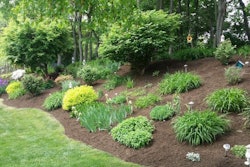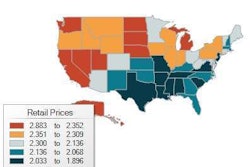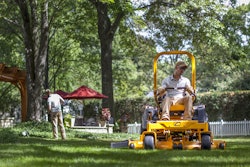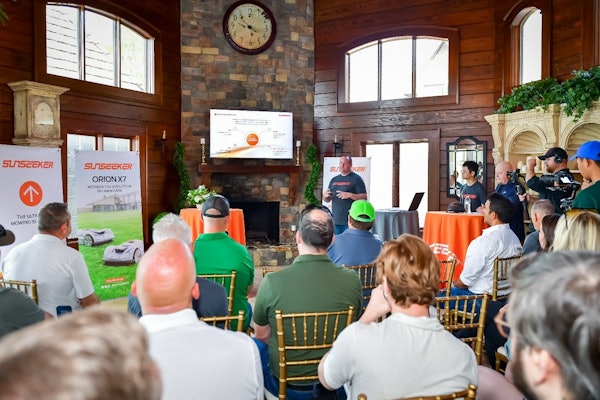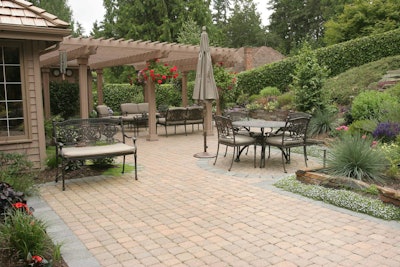 Outdoor living areas and hardscaping go hand in hand for creating a space that clients will love for years to come.
Outdoor living areas and hardscaping go hand in hand for creating a space that clients will love for years to come.Photo: Classic Nursery and Landscape
As outdoor living spaces continue to grow in popularity, hardscaping is an essential part of these spaces. Just as you wouldn’t buy a car without the tires, your clients aren’t getting a proper outdoor area without some beautiful hardscaping to pull it all together.
There are multitudes of material options for your clients to choose from, but interviews with several landscaping companies suggest certain materials are growing in popularity.
Concrete
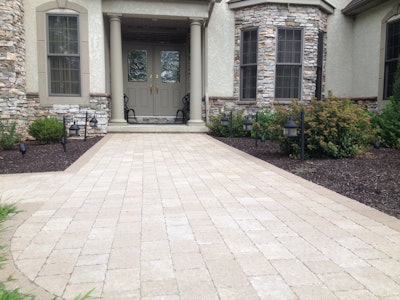 Concrete pavers come in a wide variety of colors. This walkway features Hera pavers from Techo-Bloc.
Concrete pavers come in a wide variety of colors. This walkway features Hera pavers from Techo-Bloc.Photo: Hursh’s Landscaping
“Concrete has gained in popularity over the past four or five years,” says Mark Rhodus, president of Two Brothers Brick Paving, based in Dayton, Ohio. “It’s probably the most common for hardscaping.”
One explanation of concrete pavers’ rising popularity is cost. They are durable, yet far cheaper than natural stone. Customers also have a variety of colors, textures and sizes to choose from as manufacturers respond to demand.
Unlike poured concrete, concrete pavers are less susceptible to cracking and provide a more aesthetically pleasing feel to the backyard.
“Precast pavers, for example, are a much more consistent, level surface than many stone products, go down much faster and can yield some savings for a client in comparison,” says Alan Burke, landscape architect at Classic Nursery and Landscape in Woodinville, Washington. “It is also a product that can be repeated on a later phase and matched consistently.”
Concrete pavers don’t have many cons, but clients should be aware that they are porous and will stain if not cared for. They can crack if exposed to extreme temperature fluctuations, but overall are durable and affordable.
Travertine
Another hardscaping material that is on the rise is travertine, a natural stone that is a form of limestone that has small holes throughout, providing a slip-resistant texture.
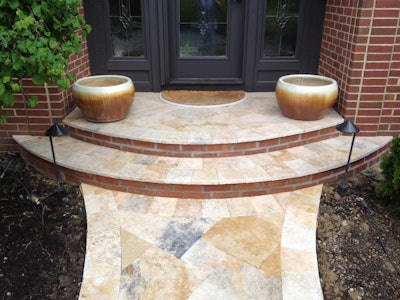 Travertine can often be found around pool deck areas, but can also brighten up a walkway.
Travertine can often be found around pool deck areas, but can also brighten up a walkway.Photo: Two Brothers Brick Paving
This feature makes travertine ideal for placing around pools and its surface is known for staying cool to the touch. It commonly comes in white to tan or caramel color, but other colors – seen less often – include chalk grays, golden browns and tan-grays.
“I do see travertine pavers are gaining more momentum,” Rhodus says. “They used to be considered a high-end product. They originally came from Italy, but after 9/11 more was available from Turkey.”
The only cons of travertine are the fact that it costs more initially than concrete pavers and is sensitive to certain acids. Still, it can last a lifetime. If the client wants one of the uncommon colors of travertine, they need to be informed up front that the price will be higher.
Brick
For commercial applications, brick has become quite common due to its longevity and ability to retain color.
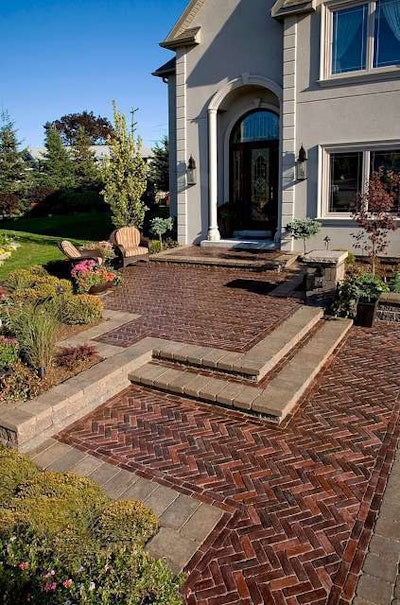 This brick front entrance features the herringbone pattern.
This brick front entrance features the herringbone pattern.Photo: Unilock
“We try to educate clients on the benefits of brick pavers,” Rhodus says. “The drawback to brick pavers is that they only come in one size. Homeowners are more into bigger sized pavers, more like slabs than pavers.”
However, with its smaller size, brick can be arranged into tight patterns. The three most poplar patterns for brick are running bond, basketweave and herringbone.
“I personally still prefer a smaller paver for walkways four feet wide and less,” says Jason Grate, the design/build manager for Hursh’s Landscaping in Emmaus, Pennsylvania. “This enables more pattern for the main area when a border is incorporated in the design.”
Brick requires less maintenance than concrete pavers and can be reused and reset in new configurations.
Some things for your client to consider: with brick, there is a considerable amount of preparatory work required for proper drainage and there is a limited color range.
Pennsylvania bluestone
As a natural stone found only in the Northeast – namely, Pennsylvania and upstate New York – Pennsylvania bluestone is far more expensive than any of the other hardscaping materials mentioned here, but it is quite popular in the high-end market.
“Natural bluestone and irregular flagstone are and will always be popular options, especially in more rustic and traditional home settings,” Grate says.
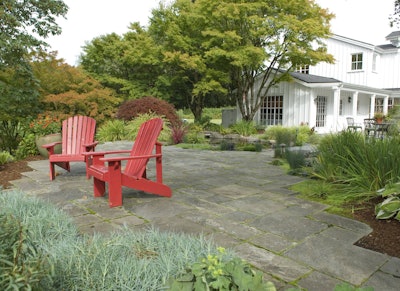 Pennsylvania bluestone’s distinctive color and incredible strength are just some of the reasons why it is popular.
Pennsylvania bluestone’s distinctive color and incredible strength are just some of the reasons why it is popular.Photo: Classic Nursery and Landscape
Bluestone comes in a variety of shades, including brown, tan, rust, green and lilac. Of course, it can also be found in the silvery blue it is named for as well. It comes in two choices of textures: natural cleft and sawn thermal.
Natural cleft has a rougher texture and a natural appearance. Sawn thermal is smoother. Bluestone can be used in either an ashlar pattern of squares and rectangles or as fieldstone, which uses irregular shapes for a more rustic feel.
An added bonus is that it does not need to be sealed and can be easily maintained by water and a brush.
The only con when it comes to Pennsylvania bluestone is its cost, which will vary depending on the client’s location, the desired pattern, thickness and any special fabrication required.
“Ultimately, I tell a customer to select their favorite option, since it will be the new addition to their home,” Grate says. “For a little extra money, get what you want so you have no future regrets.”

